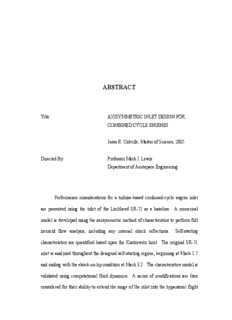
Figure 4.5 Pressure Ratio Contour Comparison (CFD above) PDF
Preview Figure 4.5 Pressure Ratio Contour Comparison (CFD above)
ABSTRACT Title: AXISYMMETRIC INLET DESIGN FOR COMBINED CYCLE ENGINES Jesse R. Colville, Master of Science, 2005 Directed By: Professor Mark J. Lewis Department of Aerospace Engineering Performance considerations for a turbine-based combined-cycle engine inlet are presented using the inlet of the Lockheed SR-71 as a baseline. A numerical model is developed using the axisymmetric method of characteristics to perform full inviscid flow analysis, including any internal shock reflections. Self-starting characteristics are quantified based upon the Kantrowitz limit. The original SR-71 inlet is analyzed throughout the designed self-starting regime, beginning at Mach 1.7 and ending with the shock-on-lip condition at Mach 3.2. The characteristics model is validated using computational fluid dynamics. A series of modifications are then considered for their ability to extend the range of the inlet into the hypersonic flight regime. Self-starting characteristics of these new designs are also characterized; results indicate that two new designs can maintain self-starting capability into the Mach 6-7 range. Full external and internal flow properties of the new designs are determined using the characteristics model. Mach number, total pressure ratio, temperature, pressure and mass flow properties (and their levels of distortion) are quantified at the inlet exit plane for all cases considered. AXISYMMETRIC INLET DESIGN FOR COMBINED CYCLE ENGINES By Jesse R. Colville Thesis submitted to the Faculty of the Graduate School of the University of Maryland, College Park, in partial fulfillment of the requirements for the degree of Master of Science 2005 Advisory Committee: Professor Mark J. Lewis, Chairman/Advisor Associate Professor Kenneth Yu Assistant Professor Christopher Cadou © Copyright by Jesse R. Colville 2005 DEDICATION To my parents, Donald and Diane Colville, for their support through the first twenty- three years of my life (including the turbulent times). ii ACKNOWLEDGEMENTS First and foremost, I have to thank my advisor Dr. Mark J. Lewis. His advice, guidance and support have been unwavering since I first approached his office as a measly little sophomore in September of 2000. Second, I would like to thank my committee members, Dr. Kenneth Yu and Dr. Christopher Cadou, for their time and constructive criticism in critiquing this thesis. An exorbitant amount of appreciation is expressed to Dr. Ryan Starkey for essentially being my mentor for the past four to five years. I honestly do not know where I would be at in this work without your help and insight. Thank you for letting me bug you so often without you (at least openly) getting annoyed! Maybe I’ll see you at Aerojet in 2 years! I would also like to express some gratitude to those who backed this project. This work has been sponsored by the Space Vehicle Technology Institute, under grant NCC3-989, one of the NASA University Institutes, with joint sponsorship from the Department of Defense. Appreciation is expressed to Claudia Meyer, Mark Klem and Harry Cikanek of the NASA Glenn Research Center, and to Dr. John Schmisseur and Dr. Walter Jones of the Air Force Office of Scientific Research. iii Now to the office. Thank you to Andy, Justin, Kerrie, Josh, Marc, Greg, Amardip, etc. for creating a comfortable atmosphere in which to work in and for putting up with my insanity and outbursts while finishing this work (and whenever Andy bugs me!). I also have to thank my entire family for their love and support from day one. I know I have not been the easiest child to raise or brother to befriend, but you all have stood by and helped me grow. Finally, I have to thank my fiancée Michelle. You have been my crutch for the past three years. You have put up with every one of my mood swings and dealt with the many, many six to seven day work weeks that I had to undertake the past two years. You are now about to venture across the country with me as I move on into the industry. I can only hope to be able to fully repay you at some point in the future. iv TABLE OF CONTENTS ABSTRACT...................................................................................................................i DEDICATION..............................................................................................................ii ACKNOWLEDGEMENTS.........................................................................................iii TABLE OF CONTENTS..............................................................................................v LIST OF FIGURES...................................................................................................viii LIST OF SYMBOLS..................................................................................................xii 1 Introduction...........................................................................................................1 1.1 Motivation.....................................................................................................1 1.2 Inlet Design...................................................................................................1 1.2.1 Previous Work......................................................................................5 1.3 Objective.....................................................................................................16 2 Model Development............................................................................................19 2.1 Program Description...................................................................................19 2.2 Method of Characteristics...........................................................................20 2.2.1 Supersonic Potential Flow with Axial Symmetry...............................21 2.2.2 Supersonic Rotational Flow with Axial Symmetry............................22 v 2.3 Solution Procedure......................................................................................23 2.3.1 Initial Data Line..................................................................................24 2.3.2 Flowfield Calculations........................................................................27 2.3.3 Shock Point Calculations....................................................................31 2.3.4 Isentropic Flow Procedure..................................................................36 2.4 Thermodynamic Relations..........................................................................37 2.4.1 Flowfield Relations.............................................................................37 2.4.2 Shock Relations..................................................................................38 3 SR-71-Type Inlet Analysis & Results.................................................................40 3.1 Geometry Definition...................................................................................40 3.2 Self-Starting Characteristics.......................................................................42 3.3 Flowfield Properties....................................................................................44 3.4 Throat Conditions.......................................................................................51 4 CFD Validation...................................................................................................55 4.1 Inviscid Analysis.........................................................................................55 4.2 Viscous Analysis.........................................................................................62 5 Modification Analysis & Results........................................................................65 5.1 Re-extension of the Original Inlet...............................................................66 5.1.1 Self-Starting Characteristics...............................................................66 5.1.2 Flowfield Properties............................................................................67 5.1.3 Throat Conditions...............................................................................72 5.2 Variable Cowl Leading Edge......................................................................76 5.2.1 Self-Starting Characteristics...............................................................76 vi 5.3 Re-extension with a Widened Shoulder......................................................77 5.3.1 Self-Starting Characteristics...............................................................78 5.3.2 Flowfield Properties............................................................................79 5.3.3 Throat Conditions...............................................................................85 5.4 Variable Cone Centerbody..........................................................................88 5.4.1 Self-Starting Characteristics...............................................................89 5.5 Variable Cone Centerbody with Re-extension...........................................89 5.5.1 Self-Starting Characteristics...............................................................90 5.5.2 Flowfield Properties............................................................................91 5.5.3 Throat Conditions...............................................................................98 6 Summary and Conclusions...............................................................................101 7 Future Work......................................................................................................107 7.1 Model Modifications.................................................................................107 7.2 Future Research Topics.............................................................................108 Bibliography.............................................................................................................111 vii
Description: